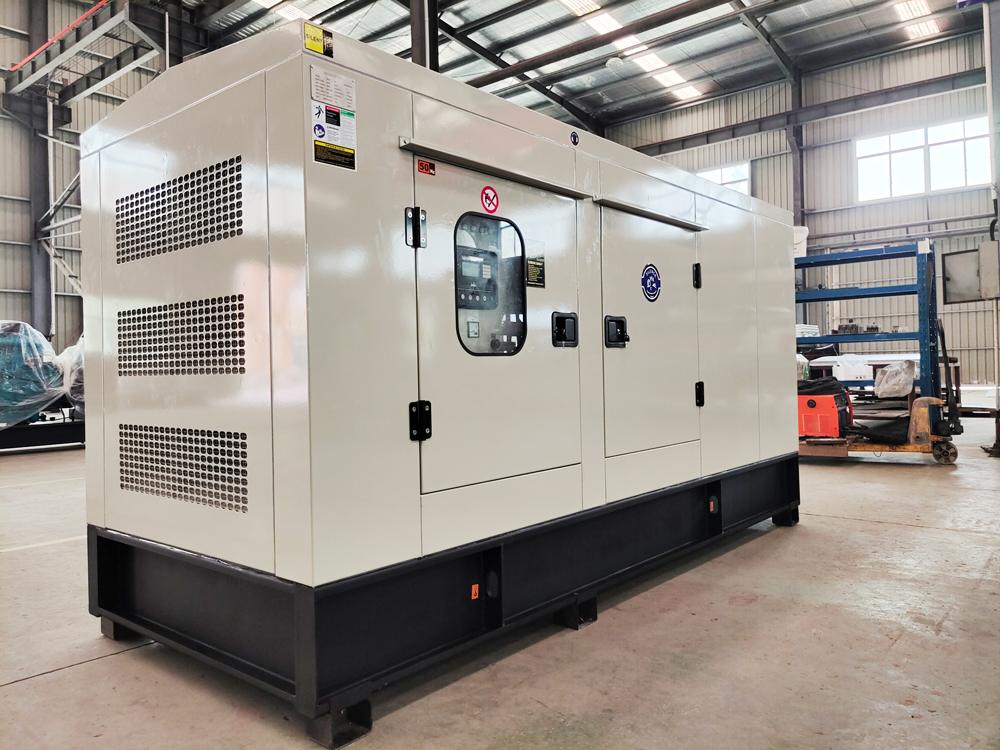When choosing a diesel generator set for mining applications, it is essential to comprehensively evaluate the unique environmental conditions of the mine, equipment reliability, and long-term operational costs. Below are the key considerations:
1. Power Matching and Load Characteristics
- Peak Load Calculation: Mining equipment (such as crushers, drills, and pumps) has high starting currents. The generator’s power rating should be 1.2–1.5 times the maximum peak load to avoid overload.
- Continuous Power (PRP): Prioritize generator sets rated for continuous power to support long-duration, high-load operations (e.g., 24/7 operation).
- Compatibility with Variable Frequency Drives (VFDs): If the load includes VFDs or soft starters, select a generator with harmonic resistance to prevent voltage distortion.
2. Environmental Adaptability
- Altitude and Temperature Derating: At high altitudes, thin air reduces engine efficiency. Follow the manufacturer’s derating guidelines (e.g., power decreases by ~10% per 1,000 meters above sea level).
- Dust Protection and Ventilation:
- Use IP54 or higher enclosures to prevent dust ingress.
- Install forced-air cooling systems or radiator dust screens, with regular cleaning.
- Vibration Resistance: Choose reinforced bases and flexible connections to withstand mining site vibrations.
3. Fuel and Emissions
- Low-Sulfur Diesel Compatibility: Use diesel with <0.05% sulfur content to reduce particulate emissions and extend DPF (Diesel Particulate Filter) lifespan.
- Emission Compliance: Select generators meeting Tier 2/Tier 3 or stricter standards based on local regulations to avoid penalties.
4. Reliability and Redundancy
- Critical Component Brands: Opt for engines from reputable manufacturers (e.g., Cummins, Perkins, Volvo) and alternators (e.g., Stamford, Leroy-Somer) for stability.
- Parallel Operation Capability: Multiple synchronized units provide redundancy, ensuring uninterrupted power if one fails.
5. Maintenance and After-Sales Support
- Ease of Maintenance: Centralized inspection points, easily accessible filters, and oil ports for quick servicing.
- Local Service Network: Ensure the supplier has spare parts inventory and technicians nearby, with a response time <24 hours.
- Remote Monitoring: Optional IoT modules for real-time tracking of oil pressure, coolant temperature, and battery status, enabling proactive fault detection.
6. Economic Considerations
- Lifecycle Cost Analysis: Compare fuel efficiency (e.g., models consuming ≤200g/kWh), overhaul intervals (e.g., 20,000 hours), and residual value.
- Leasing Option: Short-term projects may benefit from leasing to reduce upfront costs.
7. Safety and Compliance
- Explosion-Proof Requirements: In methane-prone environments, select ATEX-certified explosion-proof generators.
- Noise Control: Use acoustic enclosures or silencers to meet mine noise standards (≤85dB).
Recommended Configurations
- Medium-Sized Metal Mine: Two 500kW Tier 3 generators in parallel, IP55-rated, with remote monitoring and 205g/kWh fuel consumption.
- High-Altitude Coal Mine: 375kW unit (derated to 300kW at 3,000m), turbocharged, with dust-proof cooling modifications.

Post time: Jul-21-2025
















